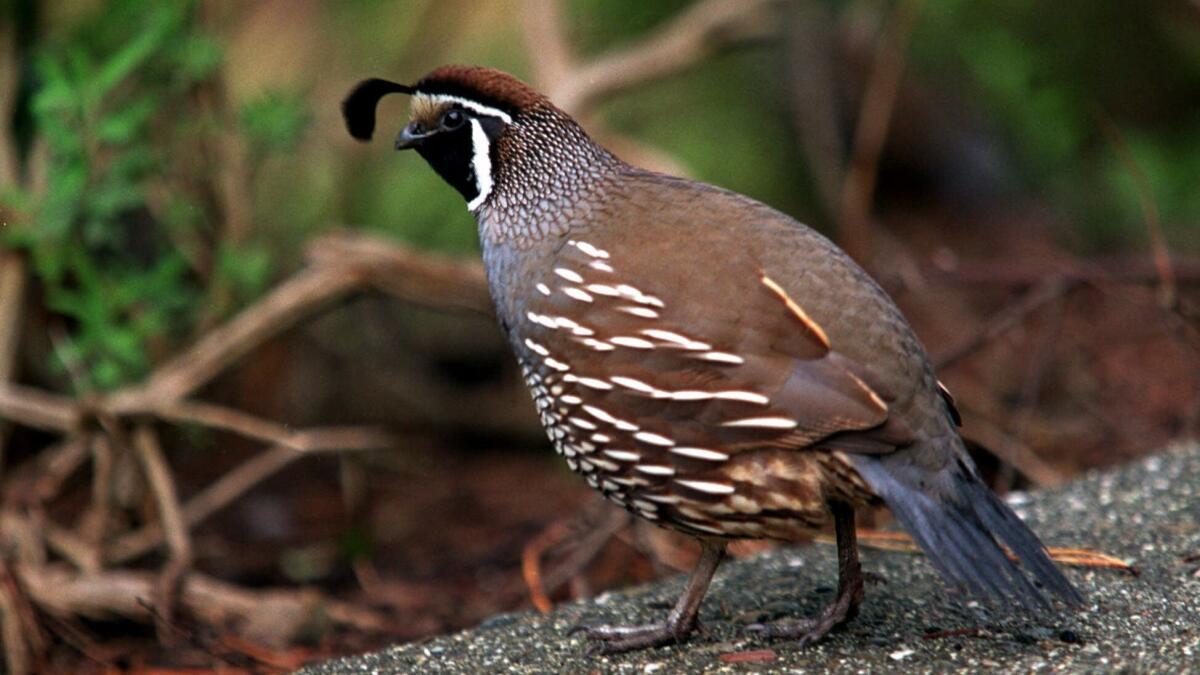The asteroid that wiped out the dinosaurs also shaped the evolution of birds

- Share via
Scientists studying plant life around the extinction event that killed the dinosaurs have made a surprising discovery: Out of all the birds living at the time, only the ground-dwelling species survived.
The finding, described in the journal Current Biology, reveals how the avian winners and losers in the wake of the Cretaceous-Paleogene extinction event shaped the evolution of all the birds we see today.
The asteroid that struck Earth some 66 million years ago was a 6-mile-wide killer rock that smashed into the Yucatan Peninsula so hard that it leveled trees within a 930-mile radius and radiated so much heat that it probably ignited wildfires worldwide, the study authors said. That’s not to mention the acid rain as well as the release of so much soot that it snuffed out sunlight, starving plants of the photons they needed to make food and causing significant cooling of the climate.
“This phase of suppressed sunlight, notoriously difficult to reconstruct, is supported by the proliferation of saprotrophs thriving on decomposing organic matter,” the study authors wrote.
The dinosaurs were entirely wiped out — except for their descendants, birds, which went on to recover and diversify. Tiny hovering hummingbirds, enormous albatrosses, ground-dwelling ostriches, seafaring penguins and every feathered creature in between owe their existence to those birds that made it through that extinction event.
Scientists have long wondered whether some birds succeeded while others succumbed, and what gave those particular survivors an edge. Some have suggested that those with toothless beaks were better at eating seeds and grains, which would have more easily survived in the apocalyptic landscape than the plants that made them. But previous work has shown that animals with toothed bills were still capable of seed-eating too. Others have pointed out that a post-asteroid world probably favored smaller birds over larger ones partly because they’d need less food to survive. Such factors may have played a role but don’t offer a full explanation, the researchers said.
For this paper, an international team of scientists used statistical methods to reconstruct the ancient ancestors of living bird groups. They combined it with a study of the fossil plant and spore record, in an effort to see what survived the asteroid and what didn’t.

The scientists found that there was a spike in the amount of fern spores after the asteroid hit. That’s a telling discovery because ferns tend to take over when a forest canopy has been leveled.
“Ferns are pioneer re-colonizers of devastated landscapes, and their proliferation represents a classic example of a ‘disaster flora’ composed of taxa capable of rapidly germinating from spores and rhizomes and/or roots,” the study authors wrote.
The trees, then, must have been lost. Any birds that had to live exclusively in those trees, the authors say, would have gone extinct as well.
This seems to match with their reconstructions, which show that the birds that survived the extinction event had ground-dwelling features, such as relatively long legs. It was only after forests started to reemerge that birds could start to fill “arboreal” niches once more.
“The numerous independent transitions toward arboreality across the neornithine tree of life — including ancient transitions within major clades such as Strisores (hummingbirds, nightjars, and kin), Otidimorphae, Columbimorphae (pigeons and kin), and Inopinaves — took place subsequent to the K-Pg transition, presumably after global forests had rebounded from their devastation following the asteroid impact,” the study authors wrote.
The findings may help researchers better understand the evolution of birds and also shed light on the plight of birds today, whose populations have been threatened by human activity, the scientists pointed out.
“Today, avian community diversity is negatively influenced by loss of plant diversity and habitat due to human activity, including monospecific agriculture and land-use patterns,” they wrote, “and the early-Paleocene low-diversity floral phase may have similarly affected avian communities at that time.”
For the Record
7:40 a.m. May 25: An earlier version of this article said the asteroid that killed the dinosaurs was 93 miles wide. The crater it created was 93 miles wide; the asteroid itself was six miles wide.
Follow @aminawrite on Twitter for more science news and "like" Los Angeles Times Science & Health on Facebook.
MORE IN SCIENCE
By getting serious about limiting global warming, the world could save itself more than $20 trillion
Can simulating evolution on a computer explain our enormous brains?




